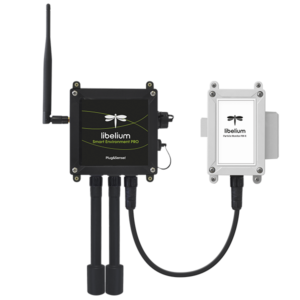Smart Environment
IOT Solutions
Pollution is one of the major problems affecting the quality of life in cities.
How is human health affected by pollution?
- Chronic Obstructive Pulmonary Disease (COPD)
- Lung cancer
- Coronary heart diseases
- Stroke
- Lower respiratory tract infection
By 2050, outdoor air pollution (particulate matter and ground-level ozone) is expected to become the leading cause of environment-related deaths worldwide.
IoT Solution for Smart Environments

- IoT technology allows users to measure air quality by monitoring various parameters.
- Air pollution means that the amount of sulfur dioxide (SO₂), nitrogen dioxide (NO₂), and carbon monoxide (CO) in the air exceeds the criteria set by the World Health Organization (WHO).
- The air quality index measures the air quality. It shows the amount and types of dissolved gases in the air. The air quality index comprises 8 pollutants (PM10, PM2.5, NO₂, SO₂, CO, O₃, NH₃, and Pb). 2 , SO 2 , CO, O 3 , NH 3 y Pb).
- There are 6 air categories in the air quality index. The categories define the air quality: good, satisfactory, moderate, poor, very poor, and severe.
Benefits of IoT Technology for the Environment
- Measuring air quality is mandatory in cities and industries to demonstrate compliance with environmental regulations.
- Air quality information provides citizens with better resources to avoid respiratory diseases and implement risk prevention measures.
- Environmental monitoring is useful for explaining to citizens the reasons for implementing traffic restrictions in case of high pollution.
- Cities that monitor their pollution levels can implement better measures to ensure healthier air quality for their residents and tourists, obtaining eco-friendly destination certifications.
Features
- High-precision sensors (continuously improving). Calibrated gas sensors are useful for measuring the exact value in PPM of a gas concentration. They are designed for applications requiring precise readings and exact concentrations.
- The particulate matter sensor, commonly known as the "dust sensor," is integrated into the platform. This sensor measures PM1, PM2.5, and PM10 particles.
- Solar-powered.
- Long battery life.
- Predictive and preventive models can be built.
Physical characteristics:
- Minimal maintenance costs.
- Weather-resistant enclosure.
- Easy to implement.
Models and Sensors
- Available Sensors:
- Temperature, humidity, and pressure
- Carbon monoxide (CO) for low concentrations
- Dióxido de carbono (CO₂)
- Oxígeno (O₂)
- Ozono (O₃)
- Nitric oxide (NO)
- Dióxido nítrico de alta precisión (NO₂)
- Dióxido de azufre de alta precisión (SO₂)
- Amoniaco (NH₃)
- Metano (CH₄) y gas combustible
- Sulfuro de hidrógeno (H₂S)
- Particulate matter (PM1 / PM2.5 / PM10) – Dust 1
- Más gases

